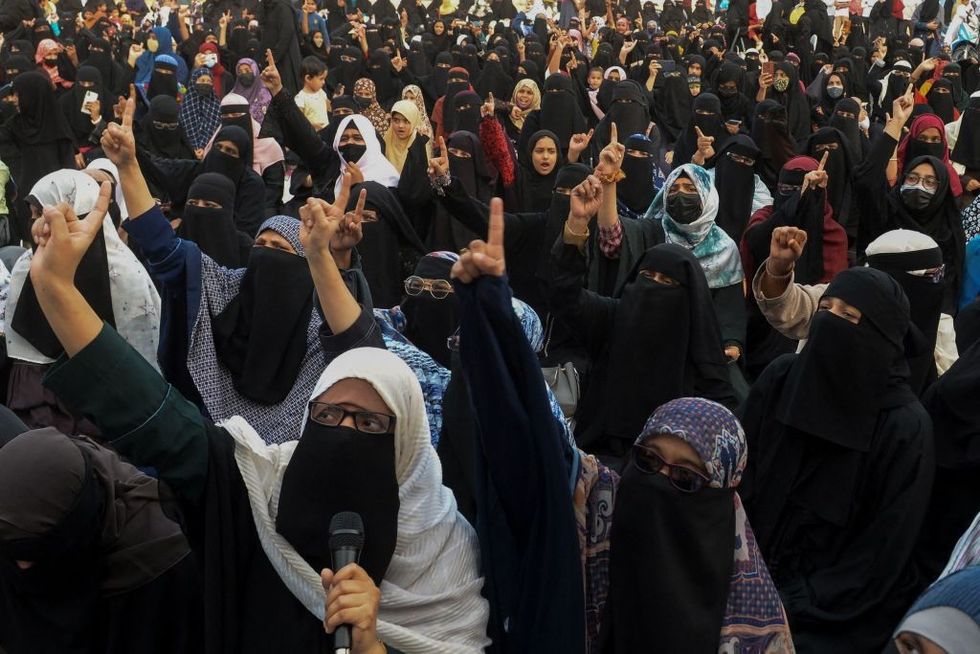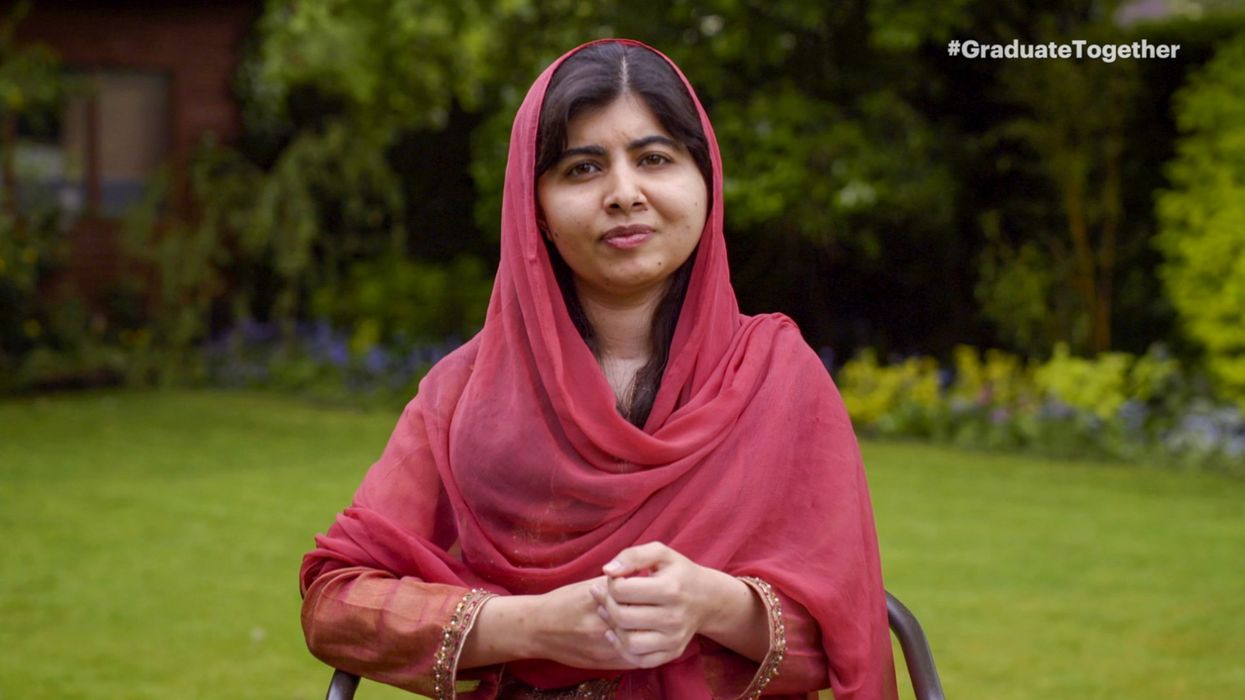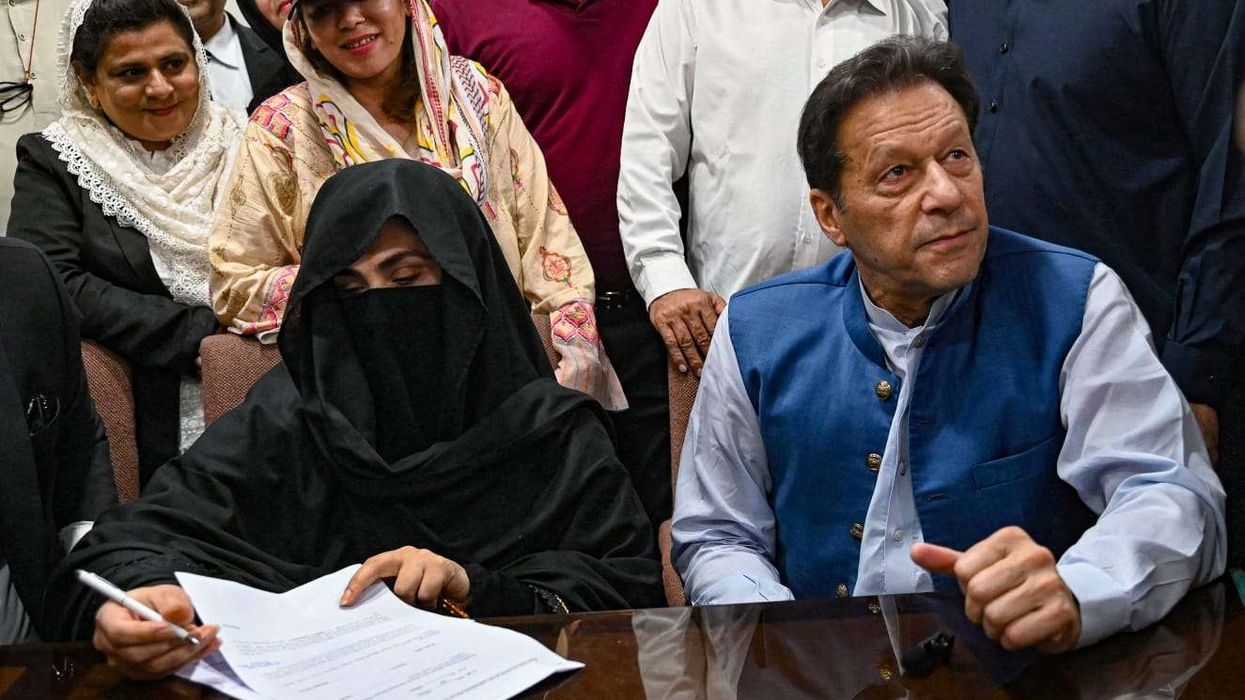NOBEL PEACE PRIZE winner Malala Yousafzai has said disallowing the hijab (Islamic headscarf) in schools is “horrifying”, referring to a row over the controversy in a south Indian state.
Yousafzai's observation comes amid protests in Karnataka after a college in the temple town of Udupi banned the hijab. Six students who attended classes wearing headscarves in violation of the dress code were asked to leave the campus. Other colleges too enforced the ban.
India's tech hub Bangalore banned protests around schools and other educational institutions for two weeks starting today (9).
As Muslim girls insisted on their “right” to wear the headscarves, a few Hindu students began wearing saffron shawls and turbans to colleges to counter the narrative.
Footage has gone viral of one hijab-wearing student being pursued by Hindu men yelling "Jai Shri Ram" (Hail Lord Ram) as she arrives at PES College in Mandya, and shouting "Allah-u Akbar" in response.
Protests have turned violent in parts of the state.
Tagging a media report, Yousafzai tweeted a student’s quote, “College is forcing us to choose between studies and the hijab”.
The UK-based education activist, who survived a Taliban attack as a schoolgirl in her native country, suggested that Muslim women are marginalised in India.
“Refusing to let girls go to school in their hijabs is horrifying. Objectification of women persists - for wearing less or more. Indian leaders must stop the marginalisation of Muslim women”, she said in the Twitter message on Tuesday (8).
As the state government issued prohibitory orders around colleges, the Karnataka High Court - which was hearing a petition challenging the ban on the hijab - referred the issue to a larger bench on Wednesday (9).
“In view of the enormity of questions of importance which were debated, the court is of the considered opinion that the Chief Justice should decide if a larger bench can be constituted in the subject matter,” Justice Krishna Dixit said.

Karnataka chief minister Basavaraj Bommai on Tuesday (8) appealed for calm after state police fired tear gas to disperse a crowd at one government-run campus.
"I appeal to all the students, teachers and management of schools and colleges... to maintain peace and harmony," he said.
Other politicians used the controversy for point-scoring.
India prime minister Narendra Modi’s Bharatiya Janata Party claimed sinister “anti-national forces” behind the issue, while the opposition Congress Party defended girls’ right to wear what they want.
Priyanka Gandhi Vadra, a senior Congress politician, took to Twitter, calling for an end to the “harassment of women”.
“Whether it is a bikini, a ghoonghat (headscarf), a pair of jeans or a hijab, it is a woman’s right to decide what she wants to wear. This right is GUARANTEED by the Indian constitution. Stop harassing women,” she said.
Pakistan's foreign minister Shah Mahmood Qureshi said the ban on the hijab is “oppressive”.
"Depriving Muslim girls of education is a grave violation of fundamental human rights. To deny anyone this fundamental right & terrorise them for wearing a hijab is absolutely oppressive. The world must realise this is part of Indian state plan of ghettoisation of Muslims," Qureshi tweeted.












